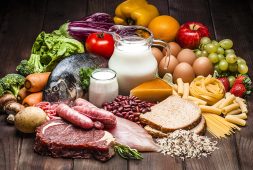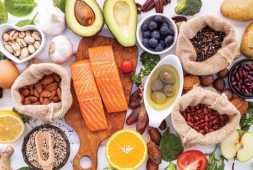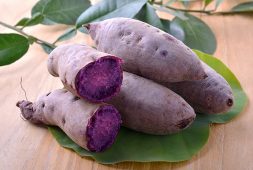
Tiktok has become increasingly popular for fitness, health and food trends, and green powders are no exception. Green powders which are basically vegetables in “power form” have become increasingly popular, especially when it comes to social media.
In fact, the hashtag “greenspowder” has had at least 10 million views, and Tiktokers and celebrities alike can’t stop talking about just how helpful they are in bringing about clearer skin, improved gut health, and can even help boost energy levels.
One such Tiktoker, Maddie Stoy, who happens to have 8k followers on her social media account, talks about how green powders help ease issues of digestion and bloating. Another social media influencer, Ali Archedeacon, who touts 59.8k followers for her page, shares that since using green powder, she’s managed to banish issues of hormonal acne, which has since made her eyes “brighter and whiter.”
Other celebrities, like Gwyneth Paltrow, Kate Winslet, and even Oprah Winfrey, claim that green powder has become a part of their daily eating rituals. One incredibly popular green powder brand, Athletic Greens, boasts of such celebrity investors like Steve Aoki, Hugh Jackman, and Cindy Crawford. But what people truly want to know is whether these so-called green powders are truly everything people have cracked them up to be.
So, what exactly are powdered greens? According to Shape magazine, ‘These products are made from freeze-drying juiced ingredients such as wheat and barley grass and leafy greens, fruits, and vegetables to turn them into a green powder that you mix with water.’
This dietary supplement aims to help people achieve their daily intake of vegetables, vitamins, and minerals. Normally, you’ll need to mix around 1 tablespoon of power with at least 5 to 10 ounces of water to make it into green juice and consume it. This can be taken daily, or depending on how much you need.
One major selling point for green powder is that they contain a variety of superfoods, but not all green powders are equal in what they have on their ingredients list. But regardless of the variety of ingredients per brand of green powder, most of them carry the most common ingredients such as seaweed, herbs, leafy greens, grasses, antioxidant-rich fruits, natural extracts, probiotics, and other vegetables.
As for the American Heart Association website, they share that ‘American adults need four to five servings of fruit and four to five servings of veggies per day.’ But according to the Centers for Disease Control and Prevention (CDC), only around 1 in 10 Americans actually meet those goals. This is where powdered greens can actually help them.
As per Amazing Grass, by consuming one 8 gram (g) serving – which is equal to one scoop or one packet – of their powered greens, their packaging claims that you can get at least two servings of fruit and veggies. But it’s also important to note that since there isn’t enough research on the exact combinations in the most common brands of powered greens, it’s also unclear if the actual nutrients that are supplemented in the green powder will provide the same benefits as their actual whole-food equivalents.
Are Powdered Greens Affordable?
Depending on the brand you want to buy, the prices of powdered greens vary from one kind to another, with some for as low as $11, while others can reach up to $99.99 or more.
Registered Dietitian Nutritionists and Powdered Greens
Some green powders tend to be more expensive than their whole, fresh counterparts, but there are reasons why they can be quite pricey.
According to Sharon Palmer, RD, who happens to be based in Ojai, California, she says that powdered greens can truly be a healthy supplement to someone’s daily diet. She explains, “They can provide some of the nutrients found in greens, such as phytochemicals, vitamins, and minerals. She also added that vitamin C and E can even help lower cholesterol while fighting inflammation.
One common ingredient in most green powders is kale, which according to the United States Department of Agriculture (USDA) has more vitamin C in a single cup (19.6 milligrams [mg], than a medium banana (10.3 mg). Meanwhile, another study that was published in Molecular Nutrition and Food Research shares that another powdered green ingredient is broccoli, would can help reduce “bad” LDL-cholesterol if it’s eaten as a whole food.
Registered dietitian at FWDfuel in Myrtle Beach in South Carolina, Abby Grimm, explains that powdered greens can provide numerous health benefits such as higher energy levels, improved digestion, more robust immune function, faster workout recovery, and better mood and less stress.
Other research suggests that the nutrients found in broccoli may be enhanced when they mix the powdered form with their other vegetables. Then another study discovered that when vegetable and fruit powder are taken consistently, it can help lower blood pressure.
However, regardless of these study findings, most registered dietitians will still mostly encourage their patients to get vitamins and minerals from whole foods and not supplements. Palmer shares, “Greens powders may not have all the nutrients found in a serving of leafy greens.”
Meanwhile, Grimm cautions that there is also a chance of “overdosing” on fat-soluble vitamins like vitamins A, D, E, and K, if you happen to be getting these vitamins already from the food you are consuming.
In addition, Grimm says that this could results in gut imbalances. She shares, “For powders containing probiotics or other digestive support, it may not be the right strains or amounts for you personally.”
Who Would Benefit from Powdered Greens the Most?
Although powdered greens seem like the perfect solution to getting your daily required dose of vitamins, not everyone needs to take it, especially since whole foods are still better.
Yet for those that struggle to get enough of their greens or drink enough water, Grimm shares that they could benefit from taking a daily powder green juice. Athletes with high calorie demands may also benefit from drinking powdered greens as well.
Grimm shares that if you already feel good, are sensitive to supplements, and already eat three to five servings of veggies a day, it would be best not to drink powdered greens anymore.
Supplements are meant to be tailored to your needs, yet not everyone actually needs them. Grimm goes on to say that although supplements could be effective for some people, “It’s important to undergo necessary testing or be evaluated by a nutrition expert to get a personalized supplement protocol for you.”
The Bottom Line
For the most part, green powders is good for you, but the question remains, do you actually need it?
Palmer shares that while people shouldn’t substitute greens powder to replace a nutrient-dense diet rich in whole foods, “A healthy diet [is] filled with a variety of vegetables and fruits.”
In addition, Grimm shares, “If you refuse to eat greens, this is going to be better than nothing. But it does not replace all the value you get from the actual green foods themselves.”
In the end, if you already eat a variety of fresh vegetables while also having a diet that’s rich in a variety of whole-foods, then you most probably don’t need to drink any powdered greens to enhance your diet.



